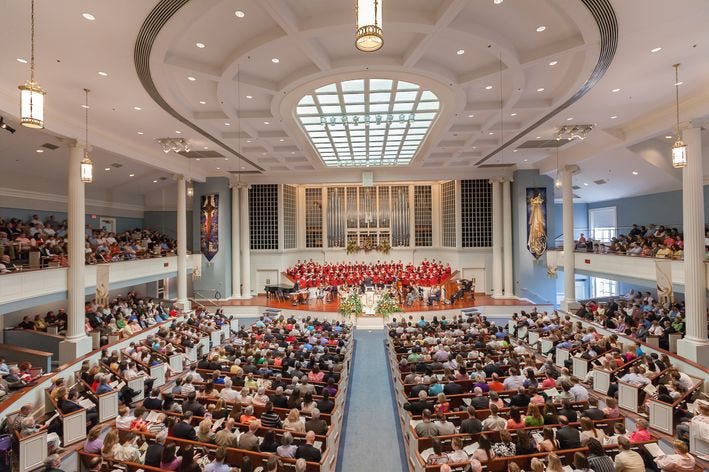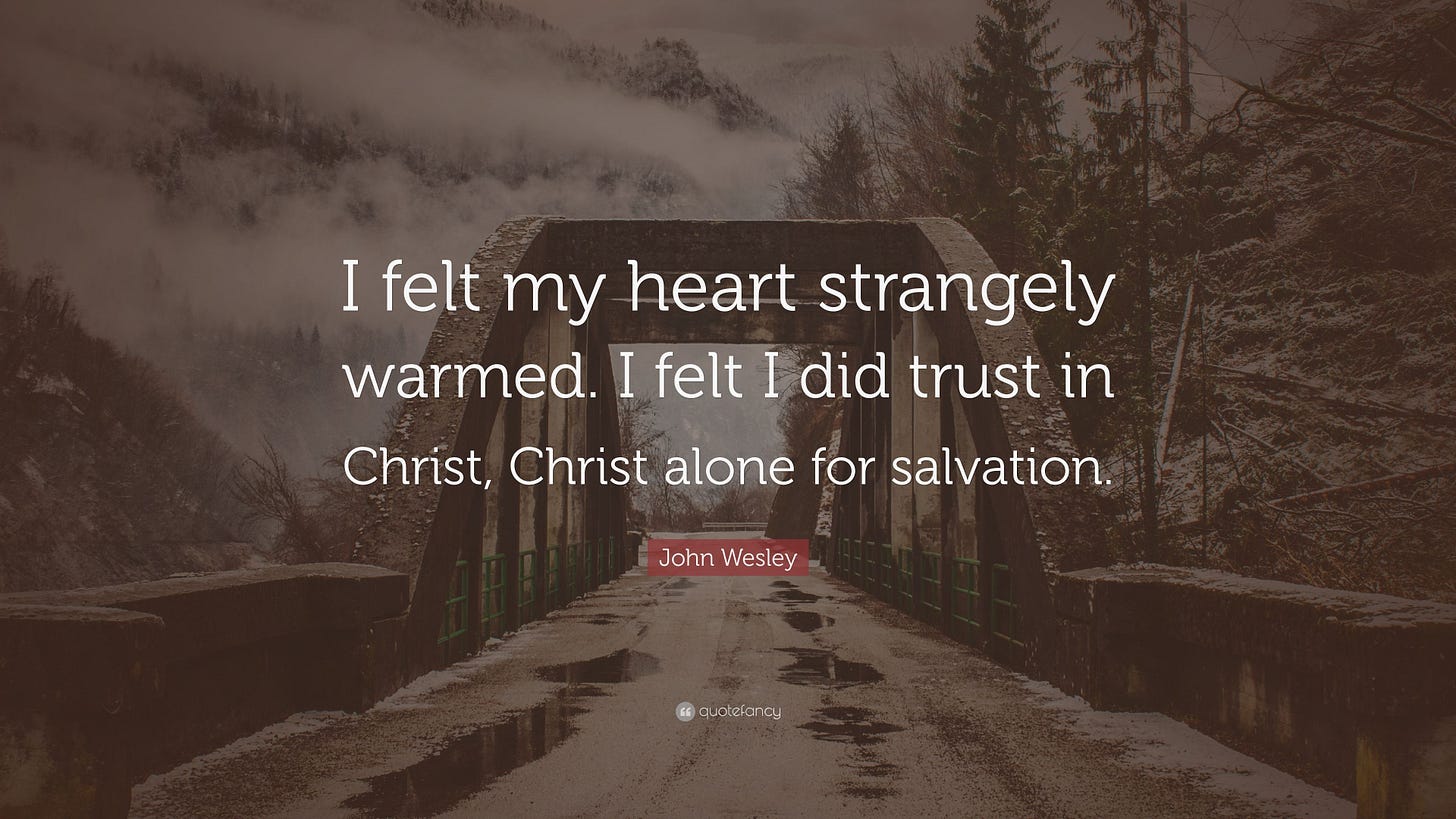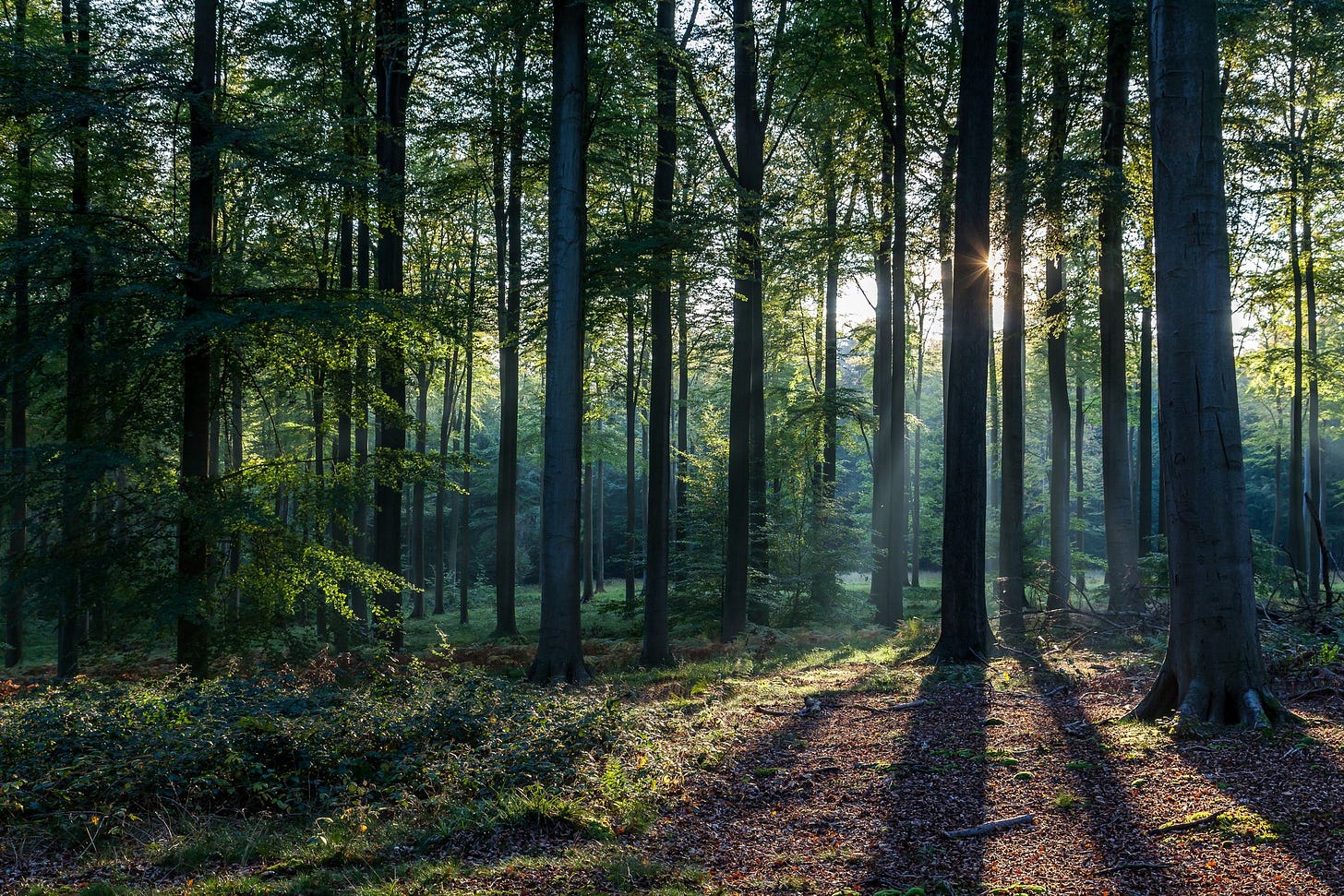(Part Three of a four-part series on early American Methodism.)
Francis Asbury and the early American Methodists helped pioneer one of the greatest church-planting movements in the 250-year history of our nation.
In this series, we’re sharing four characteristics of that movement to learn from our past and imagine how God might move in the future. First, it was a movement defined by Maverick Leadership and a willingness to swim against the currents of the culture. Second, there was a deep Missionary Spirit that contextualized the gospel for the times at hand and prioritized the lost.
In this article, we want to highlight the third characteristic and the Miraculous Encounters that typified the movement.
Revival at Wheaton
In the Spring of 1995, I received my acceptance letter to Wheaton College and decided to drive to the campus to celebrate with a close friend of mine named Matt Yarrington. Matt was the leader of a campus ministry called World Christian Fellowship (WCF), a gathering of students that prayed regularly for God to move among the nations.
A few weeks earlier, WCF had experienced a miraculous encounter with the Holy Spirit that led to a campus-wide revival.
The spark of revival came on Sunday evening, March 19th, 1995 as a few hundred people gathered to listen to two students from Brownwood, Texas testify to what God was doing on their campus.
Following the presentation, microphones were opened for students to share, and the Spirit moved in power.
“People began confessing sins and sharing burdens. There were tears and smiles, crying and singing, as people were forgiven of their sins and healed of their diseases. The meeting continued all night until 6:00 am the next morning.”
The next evening, Matt and his leadership team leaned into what God was doing and hosted another gathering at Pierce Chapel. Word began to spread and on the second day nearly 900 students were in attendance!
Continued confession, prayer, worship, and healing took place.
On Tuesday, the students gathered for a third time and were forced to move the meeting to College Church (see photo) to accommodate more than 1,350 students.
All classes at Wheaton were cancelled on Wednesday and that night a capacity crowd of 1500 people showed up and remained until well after 2:00 AM the next morning.
On Thursday one-hundred students were called to full-time ministry and President Duane Litfin addressed the college. Wesley and Asbury would have been proud as he gave a charge to move into deeper fellowship. He shared,
“Our desire is to move from this mountain top to a new plateau of obedience and fellowship with the Lord, and renewed relationships with one another.”1
The ripple effects of the revival were still being felt when I arrived on campus as a full time student in the Fall of 1996.
“Warm Hearts” Are Not Enough
I was ordained in The Wesleyan Church in 2003 and have heard countless stories of the John Wesley’s conversion experience when his heart was “strangely warmed” at Aldersgate.
Praise God for this pivotal moment in his life and his inner assurance of faith. But it was not the turning point for his ministry.
Wesley continued to struggle with doubt after Aldersgate, and lacked the power that would later characterize the Methodist revival.
Albert Outler in his book John Wesley writes, “In the first six months after Aldersgate Wesley reports numerous instances of acute spiritual depression, equal in severity to anything preceding.”
“The miraculous encounter that sparked revival came on January 1st, 1739 at a watchnight service at the Fetter Lane society.”
The service took place seven months after Wesley’s heart was “strangely warmed” and Fetter Lane became the catalyst for the Spirit encounters that became common in the Methodist revival.
Wesley writes,
“Mr. Hall, Kinchin, Ingham, [George] Whitefield, Hutchings, and my brother Charles were present at our love feast in Fetter Lane, with about sixty of our brethren. About three in the morning, as we were continuing instant in prayer, the power of God came mightily upon us, insomuch that many cried out for exceeding joy, and many fell to the ground. As soon as we were recovered a little from that awe and amazement at the presence of his majesty, we broke out with one voice, ‘We praise thee, O God; we acknowledge thee to be the Lord.”2
George Whitefield, only twenty-four at the time, likened the experience to Pentecost.
Miraculous Encounters
The Fetter Lane prayer meeting sparked something supernatural in Wesley’s life as the power of the Spirit began to play an increasingly central role in his ministry.
No longer were Wesley’s journal entries filled with accounts of spiritual struggle. Instead, there was an emphasis on the power of God.
“In the seven months following the Fetter Lane prayer meeting there are thirty-one recorded supernatural moments recorded in his journal.”
Healings, deliverances, and supernatural stories of salvation mark its pages. Wesley witnessed more signs and wonders in the months following Fetter Lane than his entire previous ministry.
In some ways, these miraculous encounters made Wesley uncomfortable at times. Wesley writes
“From this time, I trust, we shall all suffer God to carry on his own work in the way that pleaseth him.”
There were so many strange encounters with the Spirit that Wesley wrote on May 20th, “During this whole time I was almost continually asked … concerning this strange work …, ‘How can these things be?”
The next day at an open-air meeting of roughly two thousand attendees he wrote, “One and another and another was struck to the earth, exceedingly trembling at the presence of his power.”
Whether he was entirely comfortable with it or not, Wesley was now the Spirit-anointed leader of the Methodist revival.
The Empire of the Spirit
This same spirit was present on the other side of the Atlantic with Francis Asbury and the early American Methodists. They too were given the derogatory label “enthusiasts”.
“Methodists were stereotyped as excessive, emotional, and unrefined.”
“Enthusiasm” was considered a dreaded disease, the enemy of rationality, and taken from a Greek word that meant “possession by a divine spirit”. The ministers of the Anglican Church hated the idea of “enthusiasm”.
The people on the other hand, did not.
They hungered for something other-worldly. In fact, it was the miraculous nature of the movement and intense religious fervor and emotion that drew many of the them in and validated their faith.
It was not uncommon at gatherings for people to be slain in the Spirit and overcome by fainting while listening to a particularly powerful preacher.
“In one quarterly meeting in 1798, “So many people fainted and lay in such heaps that it was feared they would suffocate, and that in the woods”! 3
Great stock was placed in dreams, visions, supernatural impressions, miraculous healings, speaking in tongues, and being overcome by the Spirit.
This was a heart religion, and the experience of one’s faith was a central tenant in Methodism. It flowed out of the way Methodists viewed the process of conversion.
Conversion on the Frontier
Dee Andrews in her book The Methodists and Revolutionary America writes,
“Methodist’s religious education typically occurred over three phases: 1) the initiating ritual of the revival meeting, 2) the ‘secret’ experience of conversion and 3) the social experience of the Methodist society. The upheaval of the revival, the solitary trauma of redemption, and the orderly discipline of the Methodist community…were essential elements in an experiential process.”4
It began with what Andrews calls the “initiating ritual” of the revival.
In one of these meetings on July 25, 1787, “The power of God was among the people in an extraordinary manner; some hundreds were awakened; and it was supposed that above one hundred souls were converted. The meeting continued for two days and you could hear weeping and shouting a half mile from the meetinghouse.”
A few years later Thomas Smith, a traveling preacher wrote,
“At the commencement of the meeting, the Spirit of the Lord came as a rushing, mighty wind—the people fell before it, and lay in heaps all over the floor. The work continued all night, nor did it stop in the morning, but continued for thirteen days and nights without interruption.”5
These accounts were not uncommon and these miraculous encounters eventually moved to woodland services called camp meetings. The camp meeting became the place of greatest spiritual awakening, signs, and wonders in the movement.
These revival gatherings provided room for the “experience of conversion”, an event rarely without a supernatural element.
Filled with the Spirit, many new believers would often faint, be struck down, shout loudly, or sing praises to God.
Benjamin Abbot recalled his own moment of conversion when he asked God to come into his life. He writes,
“In that moment, the Spirit of God came on me in such a manner, that I fell flat to the floor, and lay as one strangling in blood, while my wife and children stood weeping over me. But I had not power to lift hand or foot, nor yet to speak one word. I believe I lay half an hour, and felt the power of God, running through every part of my soul and body, like fire consuming the inward corruptions of fallen depraved nature.”6
“To be holy was to be fully possessed by God.”
Stories of conversion were rarely described as intellectual decisions, but rather holy moments where the Spirit moved in power.
Conclusion
Asbury encouraged his Methodist preachers to ensure that visions and encounters were “brought to the standard of the Holy Scriptures”, but he was willing to allow the raw edges of religious excitement to thrive.
“Asbury would rather deal with the emotionalism and enthusiasm of a movement than the complacency and stagnation of an institution.”
This is not the case with everyone.
There are some who are unwilling to lean into the miraculous. Many would state the above quote in reverse fearing excess more than stagnation.
The summer after the 1995 Wheaton revival, I had the opportunity to travel with my friend as he testified in other churches and colleges around the country. When there was an openness to the Spirit, God often moved in a mighty way.
Unfortunately, there were some leaders and churches who stifled the movement.
One Sunday we were worshipping at a large church of nearly 1,000 people. My friend began to share stories of the Wheaton revival and offered a time of silence and prayer for God to convict hearts and move among His people.
“An older gentleman slowly walked forward and the place became silent. He grabbed the microphone and testified in tears to the power of God. You could have heard a pin drop.”
Soon another came forward, and then another.
One person confessed an addictive behavior and a few friends came to pray over him. Another began to weep and tremble as the Spirit drew him to his knees. People began making their way to the front to testify.
But then, out of the corner of my eye, I saw something disturbing.
I watched the senior pastor motion to his worship leader to intervene. The leader discreetly made his way to the platform and asked the older gentleman for the microphone.
The congregation was then invited to stand and they were led in a final song. Those waiting their turn to speak were ushered back to their seats, and the moment ended no sooner than is started.
It was done with such professionalism that no one would have known the difference.
God knew.
“We are warned in Scripture not to “quench the Spirit”.7
What caused this pastor to quench the very thing God was doing? Was it fear? Lack of control? Embarrassment? Pride? Uncertainty?
Perhaps to experience revival we will need to get uncomfortable. Confession can be scary. Open microphones lead to uncertainty. Bold prayers may go unanswered.
Most pastors I know like for things to be scripted and controlled. But where do we make space for God to move? When in our worship services and gatherings do we simply wait on the Spirit? How are we cultivating revival in our own hearts?
“The greatest church planting movement in American history was once referred to as “a boiling hot religion”.8
There was a spiritual intensity that characterized the movement. Miraculous encounters were common.
May we be open to experiencing the same in our generation.
https://recollections.wheaton.edu/2020/03/when-god-moves/
All quotes in this section and the following are from the article “Aldersgate or Fetter Lane” written by Dr. Douglas Fox of Irving, TX. I highly recommend you read this article. You can find it here…https://firebrandmag.com/articles/aldersgate-or-fetter-lane.
Richey, R. (2015). Methodism in the American Forest. New York, NY: Oxford University Press, p. 109.
Andrews, D. (2000). The Methodists and Revolutionary America, 1760-1800: The shaping of an Evangelical culture. Princeton, NJ: Princeton University Press, p. 75.
Wigger, J. (2009). American saint: Francis Asbury and the Methodists. New York, NY: Oxford University Press, p.166, p. 301.
Andrews, D. (2000). The Methodists and Revolutionary America, 1760-1800: The shaping of an Evangelical culture. Princeton, NJ: Princeton University Press, p. 83.
1 Thessalonians 5:19
Wigger, J. (1998). Taking heaven by storm: Methodism and the rise of popular Christianity in America. New York, NY: Oxford University Press, p.105.










Gotta admit… this one hits close to home.